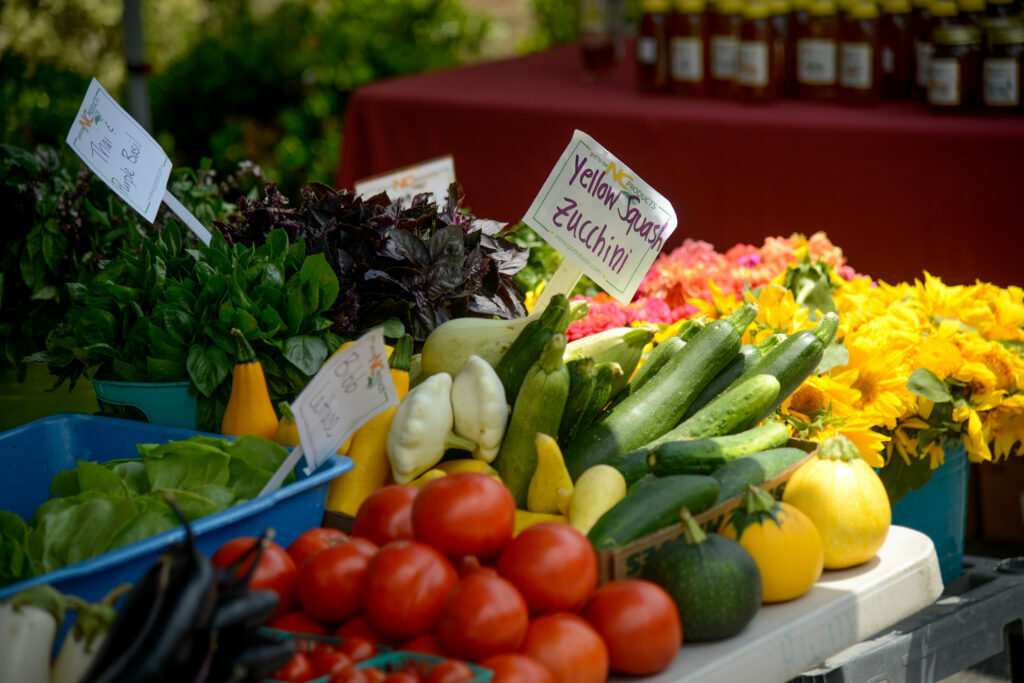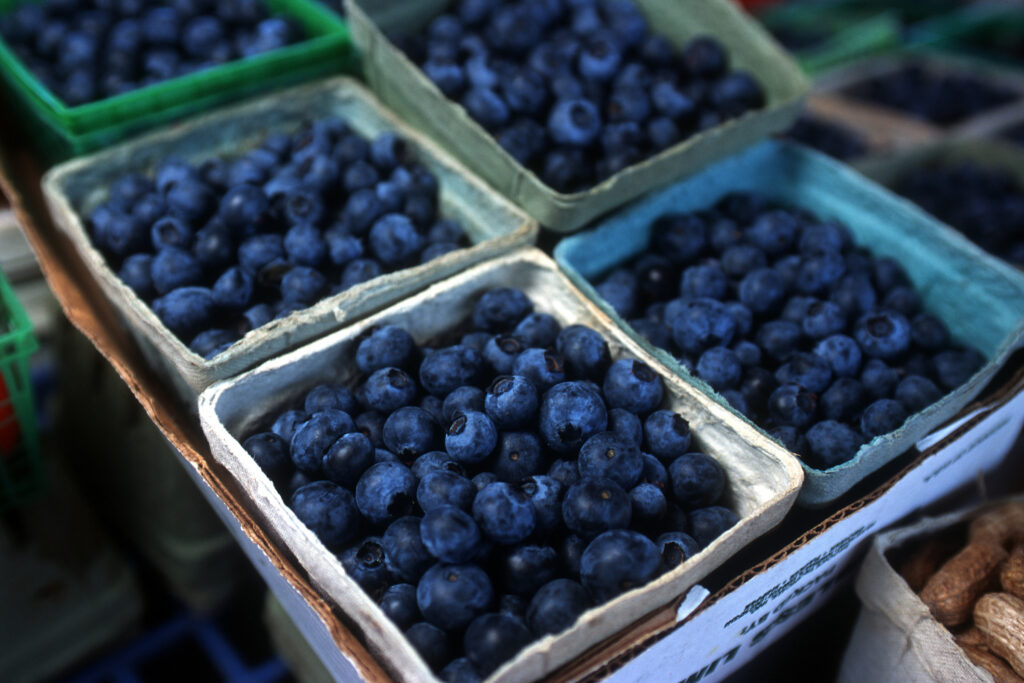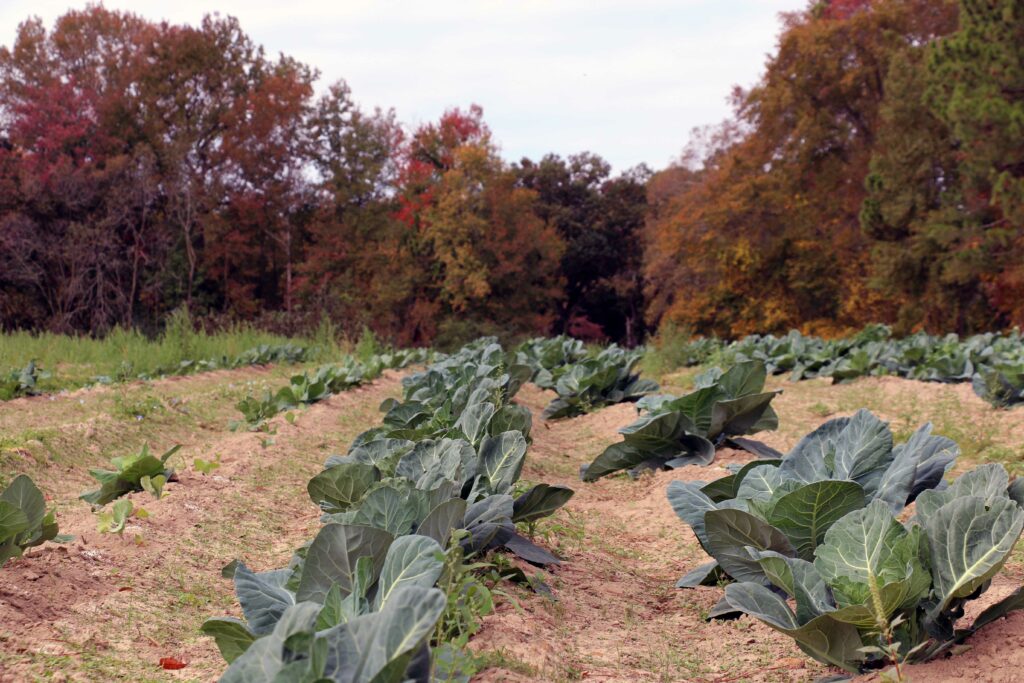Promoting Healthy, Locally Grown Food
go.ncsu.edu/readext?908338
en Español / em Português
El inglés es el idioma de control de esta página. En la medida en que haya algún conflicto entre la traducción al inglés y la traducción, el inglés prevalece.
Al hacer clic en el enlace de traducción se activa un servicio de traducción gratuito para convertir la página al español. Al igual que con cualquier traducción por Internet, la conversión no es sensible al contexto y puede que no traduzca el texto en su significado original. NC State Extension no garantiza la exactitud del texto traducido. Por favor, tenga en cuenta que algunas aplicaciones y/o servicios pueden no funcionar como se espera cuando se traducen.
Português
Inglês é o idioma de controle desta página. Na medida que haja algum conflito entre o texto original em Inglês e a tradução, o Inglês prevalece.
Ao clicar no link de tradução, um serviço gratuito de tradução será ativado para converter a página para o Português. Como em qualquer tradução pela internet, a conversão não é sensivel ao contexto e pode não ocorrer a tradução para o significado orginal. O serviço de Extensão da Carolina do Norte (NC State Extension) não garante a exatidão do texto traduzido. Por favor, observe que algumas funções ou serviços podem não funcionar como esperado após a tradução.
English
English is the controlling language of this page. To the extent there is any conflict between the English text and the translation, English controls.
Clicking on the translation link activates a free translation service to convert the page to Spanish. As with any Internet translation, the conversion is not context-sensitive and may not translate the text to its original meaning. NC State Extension does not guarantee the accuracy of the translated text. Please note that some applications and/or services may not function as expected when translated.
Collapse ▲The Meadow Lane Farm booth is doing brisk business on a crisp Saturday morning at the Durham Farmers’ Market. A steady stream of customers stops by to chat with farm owner Martha Mobley about her products and to purchase her wares.
“We do lamb, we do goat, we do pastured pork, we do Angus cattle, we do organic vegetables,” Mobley said. “We’ve recently added fruit, strawberries and blueberries.”
It could be one-stop shopping for anyone looking for healthy, homegrown fare, but that would take away from the experience of the market. Not only are there many more vendors to visit, but it’s also a fun place to just hang out.
“We have musicians, food you can eat right here, a chocolatier, bread companies, all kinds of drink companies,” Mobley said. “There’s canned pickles and jams, photography, cut flowers. It is anchored by several farms that offer produce and meat. It’s wonderful, a good vibe.”
There’s a couple of reasons why Mobley is bullish on her fellow vendors at the Bull City’s largest farmers’ market. For one, she’s on the board of directors.
“We’re always trying to make it bigger and better for our customers, and the diversity of what we offer,” she said.
And for another, it’s part of her job.
Mobley is not just a small farmer. She’s also NC State University’s Extension agriculture agent in Franklin County, and the Extension Local Food Program coordinator for the county.
“It’s a great time to be promoting local,” she said. “It supports our communities, keeps our money here local. And there is value in knowing where your food comes from, knowing that farmer.”

Locally grown food for sale at the Hillsborough farmer’s market. Photo by Marc Hall
Agriculture is the No. 1 industry in North Carolina. According to the N.C. Department of Agriculture & Consumer Services, agriculture and agribusiness — including food, forestry and fiber — contributes $92.9 billion to the state’s economy.
The most recent statistics show farm income of more than $10 billion annually, with 66% coming from livestock, dairy and poultry and the remaining 34% from crops. North Carolina is among the nation’s top producers in many commodities, including sweetpotatoes (No. 1), poultry, hogs, cucumbers, bell peppers, squash and peanuts.
Much of it comes from large-scale operations and is exported across the nation and the globe, helping the state’s economy and feeding the world.
The Extension Local Food Program has a more regional focus. It exists to promote the production, marketing and consumption of food that is grown, caught and raised within North Carolina, primarily from small and medium-sized farms.
“North Carolina exports a lot of food. Local foods focuses on keeping the food that’s produced here in the state,” said program manager Hannah Dankbar. “We explore how to benefit producers and consumers to celebrate the culture part of our agriculture industry.”
Dankbar heads up an experienced team of N.C. Cooperative Extension specialists who are all dedicated to the mission of supporting and maximizing local food systems.
“Our local food program team consists of about 70 agents and specialists from NC State, N.C. A&T State and our county offices,” she said. “We have six active workgroups and we try to meet in person twice a year. We’ll do training and brainstorming together to find innovative ways for Extension to support our state and community food systems.”
Programs are implemented by local food coordinators in every Extension center across the state. Some are Family and Consumer Sciences agents. Others work with Extension 4-H programs. Many are county directors.
They might have different roles and responsibilities, but all have at least one thing in common. They work with local producers on finding the best way to get their goods into the hands and onto the tables of consumers.
Often, that means helping small farms clear bureaucratic hurdles.
“I’m primarily a liaison between regulatory agencies and small farms and value-added producers ,” said Jill Cockerham, Extension local food program coordinator in Alleghany County. “I help vendors navigate regulatory requirements for selling food at markets.”

North Carolina’s farmers’ markets offer fresh, locally grown food.
Farmers’ markets are the most visible and accessible avenue for producers to directly market their products to consumers. The best estimate is that there are more than 230 across the state, and at least one in every county of North Carolina. The Extension Local Food Program is currently conducting the first census of farmers markets in the state.
“Shopping at a farmers’ market allows you to interact directly with the farmer or their staff,” Dankbar said. “You can ask questions about how that food was produced and where it came from and how long it’s been out of the ground. A lot of the food was picked that day. It didn’t go to an aggregator, it wasn’t mixed in with a bunch of other people’s products. You know who harvested it and the day it was harvested.”
Related: Homegrown — Shopping at Your Local Farmers’ Market
North Carolina might be one of the top agricultural states in the nation, but it’s also one of the few without a central farmers’ market association.
“Considering we are one of the top agriculture producing states, we’ve had this gap in our farmers’ market technical assistance and support,” Dankbar said. “We are in the process of supporting a new statewide farmers’ market association.”
In the meantime, Extension programming includes educational opportunities to help prepare farmers and to ensure uniform standards.
“I recently gave a session to farmers on how to sell at a farmers’ market, questions they should be asking, things they should be looking for, how to set their prices to make sure it is a good market channel for them to develop, and how they can build on that,” Dankbar said. “They can maybe use the farmers’ market as an entry point to branch into other markets.”
At the local level, Extension agents help farmers bring their products to the market in many ways. In Alleghany County, Cockerham’s efforts include staying current on consumer preferences.
“I help farmers, producers and food entrepreneurs with what consumers are looking for at markets and retail stores,” she said. “I don’t like to use the word foodie, but I’m obsessed with food. I pay attention to food trends. What are people going to be looking for next year? What are the gaps that customers are wanting to purchase but aren’t currently available at local markets? Meeting with farmers and producers during the slower winter months to discuss growing plans or the potential for new value-added products for the upcoming season has definitely helped sales.”
They also spread the word that shopping at farmers’ markets can be good value.
“There’s a misconception sometimes that the food at the farmers’ market is more expensive,” Mobley said. “But you’re getting quality, you’re supporting a local business, and the prices might be less expensive.”
Local food coordinators emphasize the quality of the products.
“I would definitely say it’s fresher,” Mobley said. “I see a resurgence in getting back to the plain, fresh local ingredient. ”
The markets can be a first foray for farmers to sell their products directly to local customers. Often, Extension agents are able to lead them to other opportunities. One of those is Community Supported Agriculture, a program that allows consumers to receive regular deliveries of goods from a local farmer.
“Farmers’ markets are good starting points for new and beginner farmers, because that takes the farmers and puts them where the consumers are,” Dankbar said. “Once their name is known and people are looking for the convenience of buying local foods, CSAs are good models and help new farmers scale up their business.”
Related: From Farm to Vacation Rental Table
Extension also connects consumers directly with farmers through support of the Visit NC Farms app. Users can search for nearby markets, farms that offer direct-to-consumer sales, and restaurants that feature local food and drink.
The NCDA&CS launched the app in 2018 as a pilot program. It has expanded to some 80 counties.
“We have quite a few Extension agents across the state who are app administrators. They are the ones reviewing the listings and making sure they are up to date, and there are no closed businesses listed there,” Dankbar said. “We’ll talk with them about how they can get farms and businesses listed on the app or how to promote the app and tie it into their other local food programming.”

The NC State Extension Local Food Program helps farmers get their crops from the field to consumers.
An important element of the program is a commitment to helping everyone in the state gain access to quality, nutritious food.
“We’re one of the top agricultural producing states, and we have people in our state who don’t have access to food and are hungry,” Dankbar said. “We think about how we can add diversity into our agriculture system, make things more resilient, and better serve everybody in our state. We produce so much good food here. Everybody should get to enjoy that.”
Food hubs often receive USDA grants that enable them to purchase food directly from farmers. Extension local food coordinators can serve as liaisons between the farmers and the food hubs.
“I’m connecting a group of small farmers in this region to a new food hub that wants to buy from women farmers,” Mobley said. “This food hub with USDA grants will be buying local food from the farmers in the county and the region, and cooking it into meals and providing it for the needy. I’m taking my Women in Ag group that wants to expand into produce up there.”
Cockerham is also working on connecting local producers with her county’s endeavors to help the disadvantaged.
“I’m on a food access group that connects many local organizations and key community stakeholders ,” she said. “One of the things we’ve talked about is how we can help food pantries source fresh produce from farmers.”
Her local food efforts also include managing the High Country Commercial Kitchen in Ashe County. The facility is available to area entrepreneurs interested in starting a food-based business and farmers who need extra storage.
“I initially thought the kitchen would mostly be used by caterers and food truck businesses,” she said. “I’d say 90% of the people using the kitchen are producing value-added products for farmers’ markets. I help them navigate the oftentimes complex nature of regulatory guidelines, labeling requirements, costing out products, finding additional market channels, and assist with product development.”
Other program coordinators also use cooking as a means to promote local foods.
“We have a local food prep work group,” Dankbar said. “They have developed kits for doing cooking demos at farmers’ markets, and they’ve created a couple of sets of recipe cards. They also have a food prep boot camp curriculum, so agents are able to pick that up and do nutrition programming that highlights local foods.”
There are many benefits to seeking out local food. It is fresh, flavorful and healthy, and it directly supports North Carolina farmers. But habits can be hard to break. It’s usually more convenient and cost-effective to go to the neighborhood grocery store.
Program staff are well aware of the obstacles to seeking out local food, so they encourage consumers to start small.
“The NC 10 percent campaign is an Extension program that encourages consumers and businesses and institutions to spend 10% of their food budget on local foods,” Dankbar said.
Whether people spend 10% or 100% of their food budget locally, there is a growing awareness that it is an important element of North Carolina agriculture.
“There is a recognition that local food systems make our overall food system more resilient by providing a diversity of markets,” Dankbar said. “Nationally we’ve seen a broader recognition for the importance of local food. North Carolina is really well positioned to leverage this interest to continue to strengthen our local food system.”

